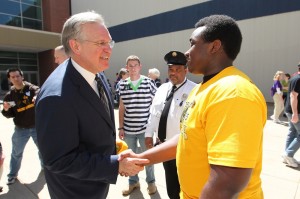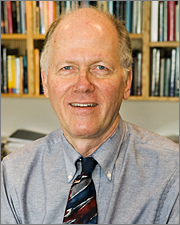
Photo courtesy of Saint Louis Science Center
Over 11,00 young robotics enthusiasts from 48 states and 29 countries converged on the Edward Jones Dome for 4 days of team competition and excitement at the International FIRST—For Inspiration and Recognition of Science and Technology—championship last week. The event, sponsored by the Saint Louis Science Center and FIRST, includes challenges for teams from kindergarten through high school.
The Saint Louis area had 34 teams competing in the four categories, and came out with several winners. The Perpetual Chaos Team from St. Louis Gateway Tech earned the “Coopertition” award”, the iBrick First Lego League Team from St. Albans got the judges “Save the Day” award, and fourteen area Junior Lego League Teams won special recognition. Luther Banner, a junior from Hazelwood High School and member of their Robo Hawks team was one of only ten students awarded the “Dean’s List Award” for outstanding leadership.
Continue reading Robotics fans from around the world have field day at Edward Jones Dome



 Nick Matteucci was in third grade when his teacher reported that he was slow learning to read, and not writing well. The teacher suggested he might have an attention deficit disorder, but because his IQ was high, and he was not yet behind grade level, the school was not ready to test him.
Nick Matteucci was in third grade when his teacher reported that he was slow learning to read, and not writing well. The teacher suggested he might have an attention deficit disorder, but because his IQ was high, and he was not yet behind grade level, the school was not ready to test him.